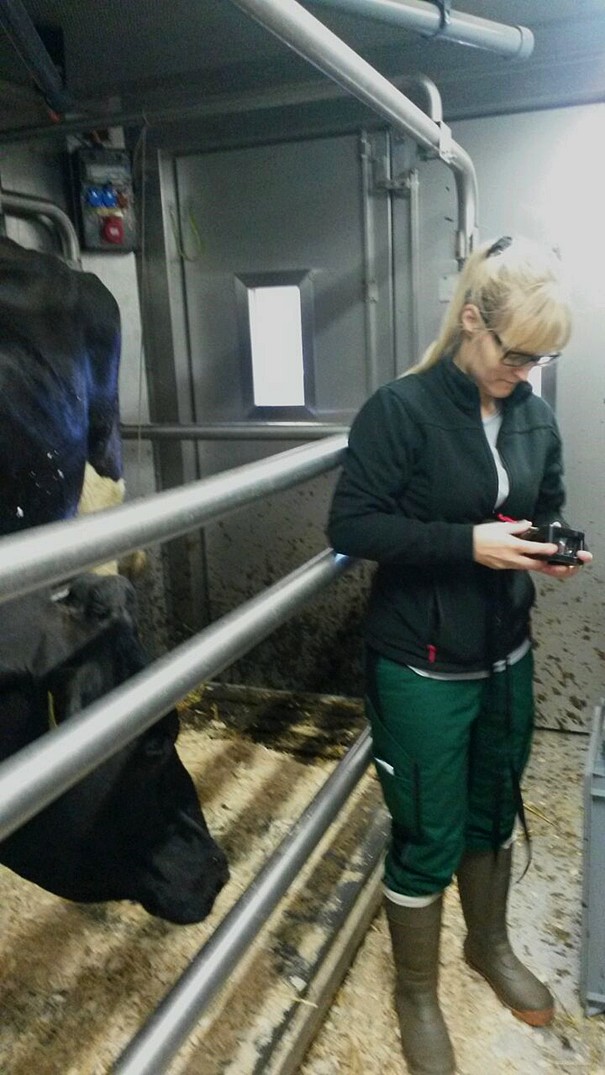 Large-scale methane measurements on individual ruminants for genetic evaluations
Large-scale methane measurements on individual ruminants for genetic evaluations
STSM - Comparing the mobile Laser Methane Detector agree with the respiration chamber
In spring 2015, I, Diana Sorg, visited ETH Zurich in Switzerland for one week with an STSM.My group at the Chair of Animal Breeding at Martin Luther University Halle-Wittenberg, Germany, is part of a national research project on feed efficiency of dairy cows. Among other questions the genetic background of methane emissions is studied in order to be able to select cows that produce less methane for breeding. However, to collect enough data for a genetic-statistical analysis we need to evaluate many animals on commercial farms. For that, we use the non-invasive and portable Laser Methane Detector (LMD) which quantifies the methane concentration in air. By pointing this hand-held device to the mouth of a cow we can record a profile of the methane that is emitted via eructation and breathing. From these profiles, containing two data points per second, new methane traits for genetic selection could be derived.
The LMD was originally developed for industrial use to detect gas leaks from a safe distance. Its application in animal physiology and animal breeding is quite new. Therefore, we wanted to compare our LMD to the current gold standard which is the metabolic/respiration chamber. Thanks to the support of the METHAGENE COST Action, I was able to go on a Short Term Scientific Mission visiting the group of Prof. Michael Kreuzer at ETH Zurich in Switzerland for one week in spring 2015. While they had cows in their respiration chambers for another experiment, I installed the LMD in the chamber and measured the methane concentration in the air. Since we already know that the cow's activity like eating, drinking or ruminating has a major impact on the amount of methane emitted, I also recorded the activity for each minute - which meant that I was sitting in front of a monitor for two days, never taking my eyes off the animals (unless for lunchtime of course :-)). Later the methane concentrations measured by the chamber's gas analyzer and the ones from the LMD were compared for each activity separately.
The cooperation with the scientists from ETH Zurich was very productive, especially with the doctoral student Susanne Meese, and I collected a lot of valuable data. I had a wonderful time in Switzerland and hope to see these people again soon– be it at one of the many COST METHAGENE events or even during a continued collaboration.



